The Master's course is a two-year program.
Fine Arts Course
Japanese Painting
The Master's Degree Program builds on the basic knowledge of Japanese painting (nihonga) acquired at the undergraduate level, while providing a valuable period for students to gain greater self-awareness and determine the direction of their future artistic activity. The curriculum calls for the completion each year of a painting measuring around 250cm x 350cm. However, this is merely a guideline; students themselves plan how to carry out their work.
Study of Japanese Painting I, II and III are intended as periods for experimental study, inspiring students with even greater enthusiasm for new forms of expression, and helping them fully understand the meaning of creative activity. Completion projects are the culmination of two years’ study, and are presented to MAU and the wider community through the degree show. Here students aim to establish themselves as artists by forming a firm vision for the direction of their future creative endeavors.
Painting
The graduate Painting Course pursues the skills and sensibilities learned in the four undergraduate years on a deeper, more professional level. Students improve the quality of their painting in an environment in which they work freely, receive the advice of faculty members, and observe others' work. With the help of a teacher, students think in more detailed, specialized ways about the problems they encounter in their work. Painting styles range from representational to abstract.
The Graduate School focuses entirely on the art work and the individual. It is a world in which conversation and criticism revolve around the students' work, and in that sense, is an important stepping-stone on the road to becoming an artist. Students progress step by step along that path, working on painting and contemplating the role of art in the world.
Printmaking
Japanese prints have been greatly admired in international exhibitions, and played a pioneering role in contemporary Japanese art. Through a variety of expressive media, from traditional techniques to prints incorporating photographs and computer graphics, the Printmaking Course is designed to extend students' creative horizons, while ensuring due attention is paid to themes generated by their own ideas. Students also establish printmaking as a means of personal expression, manifested in painting-type domains with a contemporary fine art approach.
The studios for woodblock, copperplate, lithograph and silkscreen printmaking have facilities for the production of large prints, and students in the master's degree program study print production by exploring the possibilities of printmaking as a form of expression, based on the fundamental principles of these different types of print. The objective is to provide practical training for the next generation of printmakers and researchers.
Sculpture
The Sculpture Course consists of two years of open exchange with society, in which students acquire more specialized skills with a view to future careers as sculptors and artists, accessing information for that purpose, and in turn presenting their own forms of self-expression to the community. Postgraduate studies are not simply an extension of the four years of undergraduate study, but are viewed as a process of contemplating the state of art amid shifting values, and establishing one's own professional specialty.
Science of Art and Design
Established for students whose research specialties are in academic fields such as art history, art theory, aesthetics, and design, the Course aims to encourage the development of independent research. To deepen students' understanding of professionalism and design as whole, the curriculum centers around lectures, seminars, and language instruction; studio art and design classes are not required. Lecture classes are geared to students who have taken undergraduate classes in art history and design theory or possess a comparable level of knowledge. Prospective students from other universities with degrees in literature or another fields should bear this requirement in mind.
Arts Policy and Management
The time has come to think about how to develop more effective artistic and cultural activities and environments, taking as our starting point the current state of humanity and the social backdrop, with an eye also on changing trends. Arts and culture policy is now recognized as a vital policy issue for today's world, and the quest is on for more effective ways to connect human, economic and cultural resources to create new possibilities.
The Course looks at art and design from the viewpoint of "policy" and "culture", and investigates the potential systematization of ideas and information. Specifically, students probe the ideals behind various activities and policies in realms linking society and culture, and explore the development of new cultural activities in museums, cultural institutions, and corporate philanthropy. Students develop a greater understanding of management techniques that incorporate methods based on the comparative study of cultures and civilizations, history of art and design, contemporary art theory, and art sociology. Through lectures by experienced professionals in the field and an emphasis on international and regional surveys and research projects, the Course aims at contributing new ideas to the development of support systems for art and culture that are capable of creating and disseminating new values.
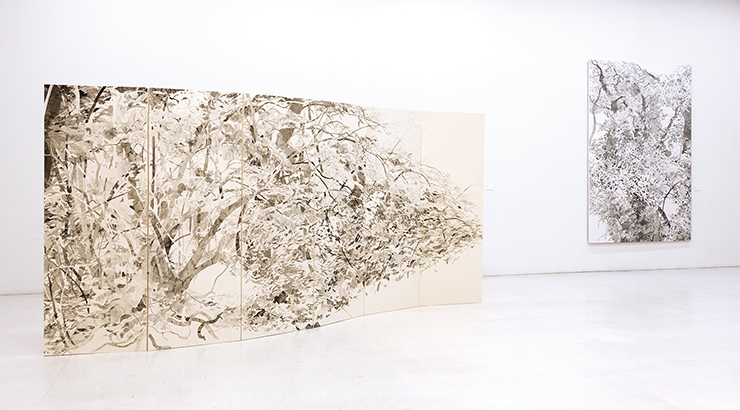
Japanese Painting|齋藤茉莉
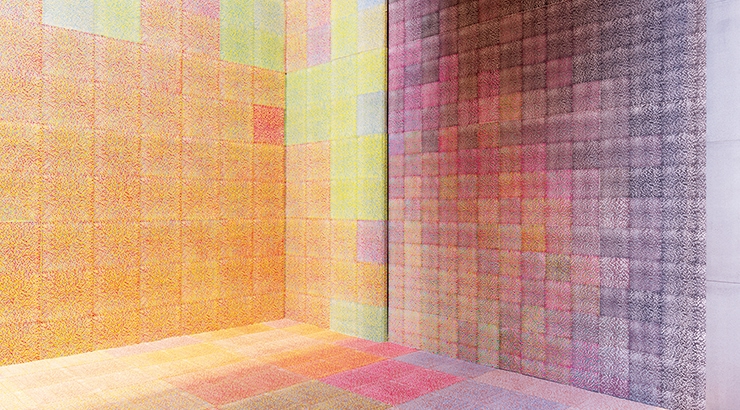
Printmaking|柏木優希
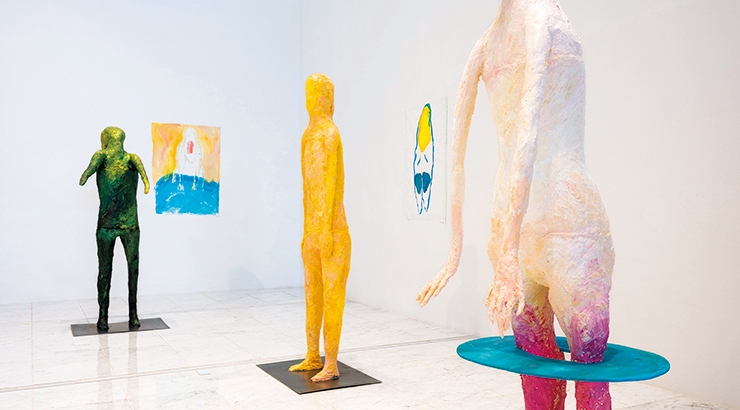
Sculpture|鈴木恵里
Design Course
Visual Communication Design
Revolutions in information technology, ecology, and knowledge of the human body and cognition have created a need for fresh ideas about communication design in the 21st century. Communication does not consist merely of transmitting messages. In a general sense, it encompasses actions that result from the use of mechanisms such as sound, sight, and gesture: for instance, responses to changes that occur between people, and actions that bring about changes because of their effect on people and the environment. By nature, communication is a dynamic process that involves a complex system of perception and action. The aim of the Visual Communication Design Course is to help students seek new designs and establish their own specialized fields through theoretical and practical research that perceives communication as a dynamic process.
Students engage in theoretical studies in fields such as visual language, semiotics of design, and theory of design, and broad-based research on descriptive behavior, and study dialogues between information and people, and communication as part of community activities. Research covers the fields of writing space design, information design and environmental design, and the integrated field of communication design.
Industrial, Interior and Craft Design
The Course covers three areas: Industrial Design, Interior Design, and Craft Design, which is subdivided by material into five distinct disciplines: metalwork, ceramics, woodwork, textiles and glass.
Students select a research area that is an extension of their undergraduate studies, and plan and produce related projects considering the design possibilities of their work in a social context. Students continue to work under the supervision of teachers, focusing chiefly on their field of specialization. To create work that addresses a wide spectrum of living, students must develop a broad outlook and be able to explore problems from various angles.
Consequently, the course is set up to enable students to receive instruction and advice from instructors in related fields as well as from their instructors.
Scenography, Display and Fashion Design
In this Course, students explore the relationship between people and the space around them, and develop closer contact with society through their special research area, with the goal of producing more fulfilling and pleasant environments. The Course focuses on three areas: a scenographic perspective that reflects the passage of time and space in stage design; presentation and planning perspectives in display design; and a fashion perspective of clothing design and its environmental context. The interrelatedness of these perspectives offers the potential for their application to adjoining fields. By providing students the opportunity to receive instruction from experts in addition to their principal instructors, the Course seeks to train specialists in spatial design who are multi-faceted.
Architecture
The primary objective of the Architecture Course is to examine in detail the relationship between architectural design and the social, economic and cultural context in which it exists. This approach builds upon the foundations of the four-year undergraduate Architecture Design Course, thus students are required to study related fields.
Students pursue their research through the study and analysis of real problems and the presentation of models, under the guidance of an instructor, with the assistance of teachers in related fields.
Second-year students work on their thesis project, using as a foundation the project that they presented as a summary of their first year of study. The special nature of the course is manifested in its pedagogical approach, which combines research papers and projects. Students also actively participate in architectural design competitions.
Science of Design
This Course studies the individual fields of design and problems common to design as a whole, along with design theory, design history, and the theory and history of form and color, from social, human, and cultural perspectives. The Course also examines the connection between these areas and technological advances in information and communication and societal changes, particularly in industrial structures and lifestyles. The rapidly growing fields of information- and media-related design and social design are discovering various problems of new and different natures, and opening up new areas of research. Thus concepts and methodologies to deal comprehensively with design are required in order to identify, understand and solve problems, offer criticism, and present design proposals. The Science of Design is a creative field that seeks design solutions in social, human, and cultural contexts, which it uses to forge new areas in the study and use of design.
Design Informatics
As our continually changing modern society brings about a metamorphosis in value systems, it demands expansion in the applications of design and reforms in its methodologies. The most urgent needs at present are design theory regarding high-speed information technology and related methodologies. Responding to this state of affairs, the Design Informatics course focuses on research from a creative viewpoint, e.g. the digital representation of information; a cognitive psychological viewpoint, e.g. harmonious and easy communication between people and machines; and a technological viewpoint, e.g. the informatization of design processes. It also aims to make a contribution to society by seeking out problems from global cultural, social, economic and environmental perspectives, investigating their connection to information technologies and proposing new solutions.
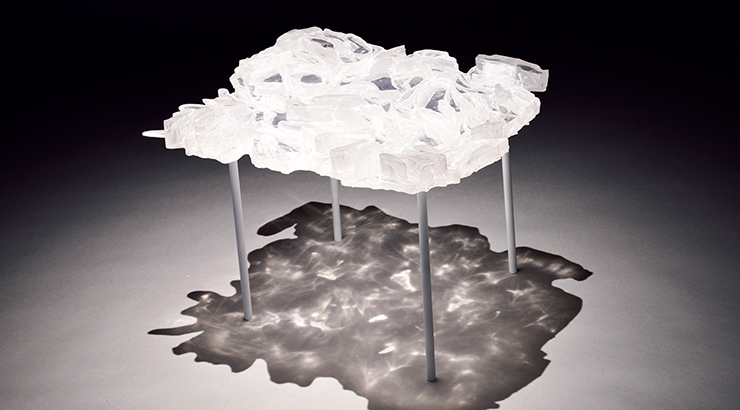
Industrial, Interior and Craft Design|チン キ
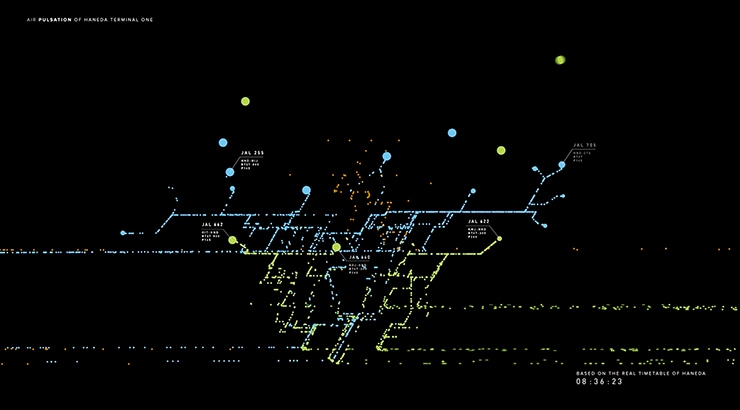
Science of Design|ショウ キン
